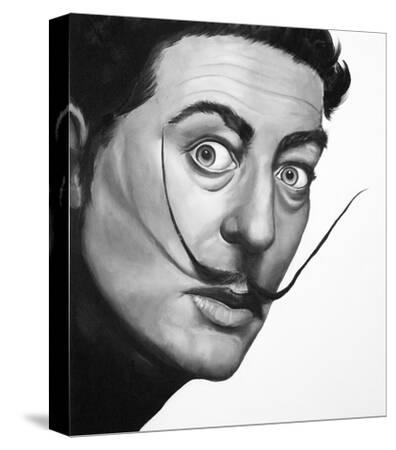

Swarming around the large face are biting serpents. In their mouths and eyes, there are more identical faces in a process implied to be infinite. In its mouth and eye sockets, there are identical faces. The face is withered like that of a corpse and wears an expression of fear and misery. The painting depicts a withered, disembodied head hovering against a barren desert landscape.

This work was painted between the end of the Spanish Civil War and the beginning of the Second World War.

He sometimes believed his artistic vision to be premonitions of war. The trauma and the view of war had often served as inspiration for Dalí's work. It was painted during a brief period when the artist lived in California. Thankfully - at least for the art world - it didn’t cure Dalí of his obsessions, or his desire to exhibit them to the world.The Face of War ( The Visage of War in Spanish La Cara de la Guerra) (1940) is a painting by the Spanish surrealist Salvador Dalí. These had included uncontrollable fits of hysterical laughter and attention-seeking behavior, such as painting his armpits blue and rubbing his body with goat dung and fish glue.ĭalí claimed, however, that learning Gala’s “secret” cured him of his madness. A young Dalí had exhibited signs of mental illness. Whatever the nature of Dalí and Gala’s relationship, however, it had a positive effect on the artist. Some speculate that Dalí may have derived sexual gratification from watching Gala have sex with other men (candaulism). Throughout her relationship with Dalí, she maintained a string of attractive, young lovers, including the German surrealist artist Max Ernst and Jeff Fenholt, the original star of Jesus Christ Superstar. Gala reportedly replied, “I want you to kill me.” Dali’s attraction to her was immediate.īy all accounts Gala was a cougar with an insatiable sexual appetite that bordered on nymphomania. When Dalí met Gala, he asked her what she wanted from him. Opinions are likewise divided on whether Dali was a virgin when he met his future wife and muse, Helena Deluvina Diakonoff - better known as “Gala.” Gala was a married woman 10 years Dalí’s senior, notorious for her long list of lovers. He had a close friendship with the poet Federico Garcia Lorca, a relationship that may have been homosexual (though this has never been confirmed). The painting shows a seductive woman rising out of a downward-facing head, which is suspended over a lotus swarming with ants (another popular motif in Dalí’s work). The positioning of the woman’smouth next to a thinly clad male crotch suggests fellatio, while the trickle of blood on the male figure’s thigh may represent castration.ĭalí’s sexuality is still a matter of debate. He also developed a fascination with buttocks (both male and female) and a pathological fear of castration. These obsessions - along with Dalí’s well-known terror of locusts - would find expression in many of his most famous paintings.ĭalí’s “The Great Masturbator” - considered his first significant work - highlights all three of these themes. He began to associate sex with putrefaction and decay.ĭalí soon became addicted to masturbation, reportedly the primary – if not the only – sexual activity in which he engaged throughout his life. These photos of grotesquely diseased genitalia fascinated and horrified Dalí.

On reading a pornographic novel in which the protagonist said that he enjoyed “making women creak like a watermelon,” Dali worried he would never be able to do that himself.ĭuring Dalí’s youth, his father attempted to “educate” him with a book showing explicit photos of people suffering from advanced untreated venereal diseases . Explicit sexual themes, in particular, recur with a regularity seldom seen in mainstream art.Īs a schoolchild, Dalí compared his penis to those of his schoolmates and found it “small, pitiful and soft.” For a long time, he believed himself impotent. Salvador Dalí’s fears and obsessions inspired some of his most famous works. Salvador Dalí, The Great Masturbator (1929)


 0 kommentar(er)
0 kommentar(er)
